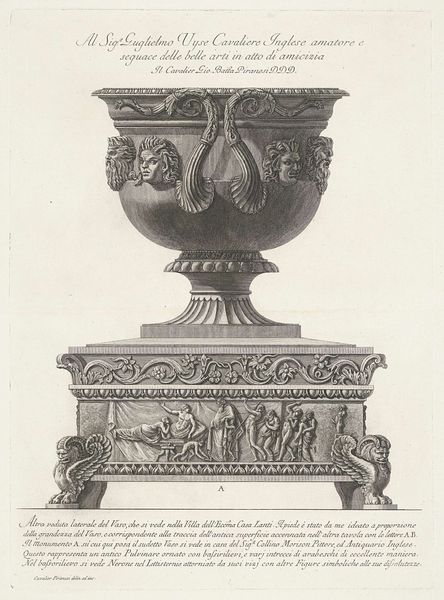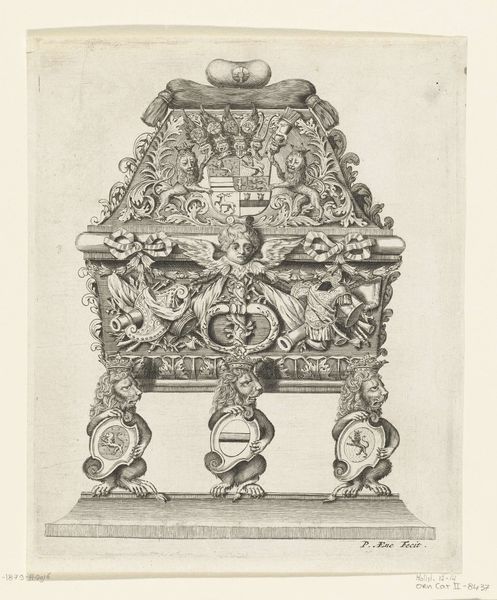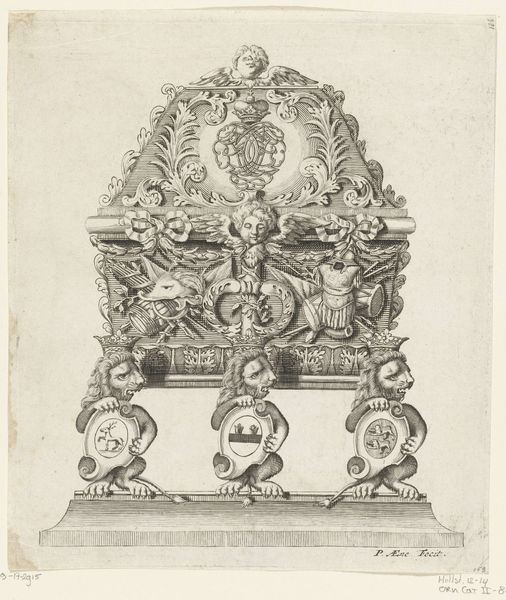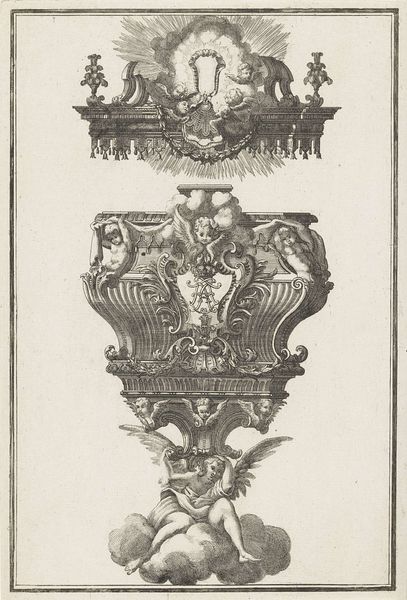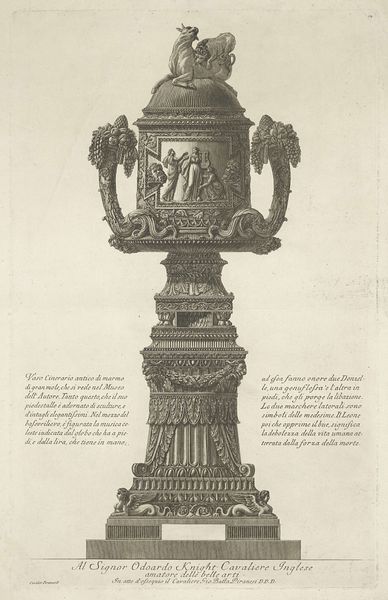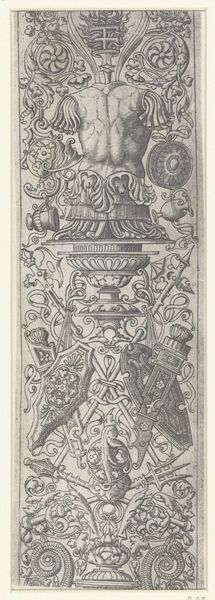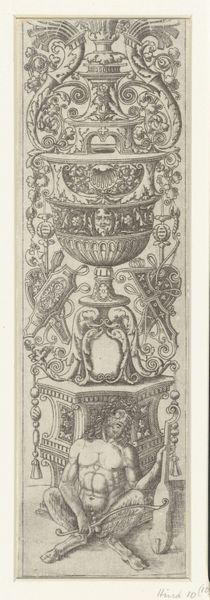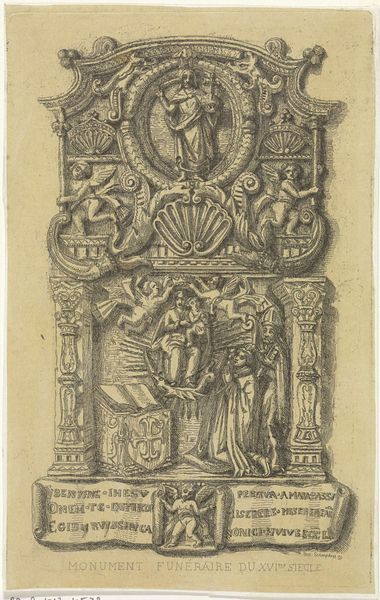
Dimensions: height 527 mm, width 385 mm
Copyright: Rijks Museum: Open Domain
Curator: Look at this elaborate design! Here we have Giovanni Battista Piranesi's "Antiek altaar," created in 1778. It is currently housed right here at the Rijksmuseum. The artwork is a print—an etching and engraving—demonstrating a fascinating blend of Neoclassical and Baroque styles. Editor: My first impression is grandeur mixed with an almost unsettling level of detail. The lines are so precise, almost surgical, but the subject matter itself feels flamboyant and overflowing. Is it the juxtaposition between the geometric and the organic that’s getting to me? Curator: That contrast is deliberate and impactful. Piranesi, known for his detailed architectural fantasies, often incorporated elements of ruins and reconstruction. Consider the mythical creatures – the winged lion legs are like markers of ancient civilizations – and recall that Piranesi produced and sold meticulously accurate prints documenting existing and imagined structures of the Antique era. This altar almost seems to exist outside of time, blending eras, from Italian Renaissance to neoclassicism. Editor: Precisely. And there is something melancholic about the imagery: angels and symbols of joy framing this decaying still life. Do you think the etching technique contributes to that feeling of historical distance, of an event viewed across time? Curator: Absolutely, the medium plays a crucial role. Etching and engraving allow for incredibly fine lines and detailed textures, but there’s a coolness, a sense of detachment in the print-making process that contrasts to a brushstroke on canvas. Here, the black and white amplifies that drama, lending a starkness that invites us to contemplate the passage of time and the weight of history. In fact, note how the original function is lost in these exaggerated scales and theatrical display. Editor: Thinking about what it represents historically… did Piranesi intend a socio-political critique here? Or did these pieces appeal to a desire for the splendor and idealized versions of previous eras that was building in European and English markets at the time? It’s presented in the name of some very powerful patrons in the artwork's script at the top there. Curator: Both are equally valid interpretations of this piece. As a historian of imagery, you recognize this altar reflects—and maybe also scrutinizes—the art world and patronage of his time. While I interpret and enjoy its symbols. Its lion imagery calls to mind leadership and strength while the angels at the base perhaps refer to salvation. These all offer potent symbols when taken as a whole. Editor: It’s a conversation between epochs and images – Piranesi ensures we will never simply *see* antiquity, but will rather always be reminded of the process by which it has been reconstructed for us. Curator: Indeed! And in observing Piranesi, perhaps we begin to discover something about ourselves, our times and the art historical impulses of those in positions of social and financial influence, and its reflections and effects on how we all value symbols of art, power, culture, and place today.
Comments
No comments
Be the first to comment and join the conversation on the ultimate creative platform.

